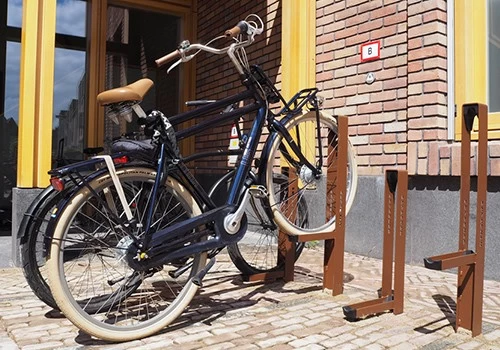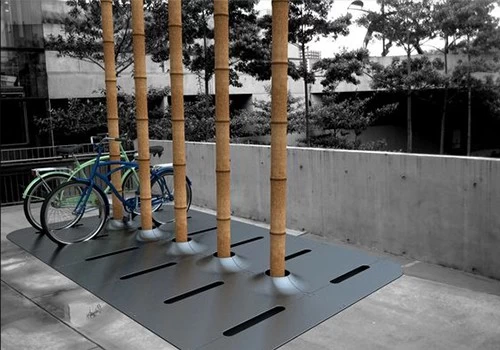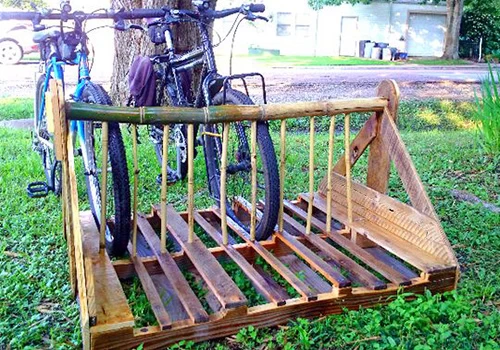Specifications
Model Number : PV-SC-001
Type: Bike parking and storage
Color:Yellow,Black,Green,Red,or Customized.
Style : both indoors and outside
Material : carbon steel
Loading: According to customer need
Size :195*23.2*75cm,200.55*23.2*75cm,or Customized.
Finish: hot-galvanized
Specifications
Model Number : PV-0081-01
Type: Bike parking and storage
Color:silver
Style : both indoors and outside
Material : carbon steel
Loading: According to customer need
Size :Height 1463mm, Depth 1114mm
Finish: hot-galvanized
Model Number : PV-0081-01
Type: Bike parking and storage
Color:Black
Style : both indoors and outside
Material : carbon steel
Loading: 2-10 bikes (According to customer need)
Size :Height 1463mm, Depth 1114mm
Finish: hot-galvanized
Model No.: PV-H1
Size: w605*D400*H330mm
Specification: Round tube:¢16*1.2mm
Finish: Power coated
Net Weight: 1.6 kgs
Packing size:6pcs/ctn
MOQ: 100pcs
Model Number : PV-0024-01
Material : carbon steel/stainless steel
Loading: according customer space size,we can design according the size
Size : W1977*D1130(depend on your parking space)*H2500mm
Finish: Powder coated ,hot-galvanized/electric polish
Packing size :2000*2000*2500mm(40 parking space )
Powder coated ,hot-galvanized/electric polish
Product number:PV-0046-01
Material:carbon steel
Specification:10.2*59*28CM or Customized.
MOQ:100PCS
Port:Shanghai
Trademark:PV
Model Number : PV-0081-01
Type: Outdoor Bike Parking Rack
Style : both indoors and outside
Material : carbon steel
Loading: 2-10 bikes (According to customer need)
Size :170.5*116*148CM
Finish: hot-galvanized
Model Number : PV-0055-01
Type: compact flat pack /slot
Color:black / silver /yellow/optional
Style :Outdoor/indoor
Material : carbon steel/ stainless steel
Capacity : park 6 bikes
Size : L1400*W1054*H840mm
Net weight :38KG
Finish: powder coating / hot galvanized /elctropolishing
Packing size :1490*860*160mm 1pcs/ctn
Product Name: Multi-Capacity Horizontal Two Tier Bike Parking Rack
Material: Carbon Steel
Finish: Powder coated
Post: 80mm * 80mm thickness: 3mm
Steel plate: thickness: 2mm
Dimension: 1325*1890*1830mm
Weight: 370 kg/set
Model: PV-0067-01
Material: stainless steel 304
Pipe: 50 mm* 2.5 mm
Size: 900*700 mm(L*W)
Surface treatment: polishing

Cycle racks, vital in supporting the surge in cycling as a green transportation mode, are now being manufactured with sustainability in mind. Manufacturers are seeking environmentally friendly materials and processes to create racks that are not only durable and functional but also gentle on the planet. This article explores the range of sustainable materials used in cycle parking racks, from recycled metals to innovative composites, and examines the benefits, challenges, and future potential of these eco-friendly options.
One of the most popular choices in sustainable manufacturing for cycle racks is recycled metal, particularly steel and aluminum. The reasons for this are clear: recycled metals offer strength, durability, and resistance to weather and wear, making them ideal for outdoor installations. Recycled metals reduce the need for mining, which is energy-intensive and environmentally harmful. By opting for recycled rather than virgin metal, manufacturers can create high-quality cycle racks with a lower environmental impact.
Steel and aluminum are two of the most commonly recycled metals. Recycled steel retains its durability and tensile strength, making it a cost-effective option that performs as well as new steel. Recycled aluminum is lightweight, rust-resistant, and doesn’t compromise on strength, making it a preferred choice for bike racks. The recycling process for these metals uses significantly less energy compared to producing them from raw materials—up to 75% less in the case of aluminum.
The environmental benefits go beyond energy savings. By using recycled metals, manufacturers contribute to the circular economy, reducing the waste sent to landfills. The materials can also be recycled again at the end of their life, extending their lifecycle and further minimizing waste.

For those looking for an environmentally friendly alternative to metal, bamboo is an excellent option. Bamboo grows extremely quickly—it can mature in as little as three to five years—making it one of the most renewable natural resources available. As a building material, it is incredibly resilient, capable of withstanding various environmental conditions, and is naturally resistant to moisture and pests.

Bamboo is both lightweight and strong, making it suitable for creating bike racks that are durable yet easy to install. Its unique appearance also makes it popular in urban areas where aesthetics are valued alongside function. Bamboo’s natural strength and resistance to weather mean it can hold up well outdoors without extensive maintenance.
One downside is that bamboo cycle racks may require additional protective coatings to prevent weathering and decay over time. However, even when treated, bamboo remains a far more sustainable option than many other materials due to its renewability and minimal environmental impact during harvesting.
The growing issue of plastic waste has spurred the development of recycled plastics and composites in manufacturing, including cycle racks. Recycled plastics can be transformed into durable, weather-resistant materials that are perfect for outdoor installations. These plastics are often reinforced with other materials, such as wood fibers or glass, creating composite materials that have the structural integrity needed for cycle parking solutions.
By utilizing recycled plastics, manufacturers help to address the plastic waste crisis. These composites are often designed to mimic the appearance of wood, providing an attractive, low-maintenance alternative that’s resistant to rot, insects, and harsh weather. Recycled plastic composites are also less prone to cracking and warping than pure wood, which enhances their longevity.
Another significant advantage is that recycled plastic materials are lightweight, making them easier to transport and install. This reduces the overall energy required for the installation process. Furthermore, by reducing reliance on virgin plastic, manufacturers are contributing to a lower carbon footprint and lessening the demand for petroleum-based resources.
Incorporating wood into cycle rack designs can offer a warm, natural aesthetic that complements urban spaces. However, to ensure sustainability, it’s essential to source wood responsibly. Using wood from certified sustainable sources, such as those certified by the Forest Stewardship Council (FSC), ensures that the wood is harvested in an environmentally and socially responsible manner.
Wood sourced from FSC-certified forests is harvested in ways that preserve biodiversity and respect the rights of workers and local communities. This wood is renewable, biodegradable, and can be locally sourced, which minimizes transportation emissions. Additionally, wood can be treated with natural, eco-friendly sealants to enhance its durability against outdoor elements.
While wood is generally more susceptible to weathering than other materials, sustainable wood choices can have a long lifespan when properly maintained. Wooden cycle racks are often used in public parks, eco-friendly developments, or areas where an organic look is preferred. They offer both functionality and a unique aesthetic that complements greenery and natural surroundings.
Protective coatings are essential in cycle rack manufacturing, especially for outdoor applications. Traditional coatings, often made from synthetic chemicals, release volatile organic compounds (VOCs) that are harmful to both the environment and human health. To combat this, manufacturers are turning to biodegradable and plant-based coatings that offer the same level of protection without the harmful side effects.
Plant-based coatings are derived from natural oils, such as linseed or tung oil, or from other renewable resources. These coatings create a protective layer that guards against moisture, UV damage, and other environmental factors. Because they are biodegradable, they break down naturally at the end of their lifecycle, reducing their environmental impact.The application of these coatings also aligns with the “cradle-to-cradle” design philosophy, which focuses on creating products that can be safely returned to the environment without harm. This approach minimizes pollution and supports the creation of products that contribute to a healthy, circular ecosystem.
Concrete is a staple in construction due to its strength and versatility, but traditional concrete production is a significant source of carbon emissions. To address this, manufacturers are exploring alternatives such as geopolymer concrete and concrete made with recycled aggregates. Geopolymer concrete uses industrial by-products like fly ash and slag as binding agents, which can significantly reduce its carbon footprint.
Geopolymer concrete has similar structural qualities to traditional concrete but produces up to 80% fewer emissions. This makes it a viable option for manufacturers looking to reduce the environmental impact of their bike racks without sacrificing strength or durability. Using recycled aggregates—such as crushed concrete or glass—further reduces the demand for virgin materials and promotes recycling.By integrating these sustainable materials, manufacturers can create bike racks that are not only robust and long-lasting but also align with modern eco-conscious values.
The demand for sustainable bike racks is only expected to increase as more cities commit to reducing their carbon footprints and promoting green transportation. For manufacturers, investing in sustainable materials is a strategic move that aligns with global sustainability goals. As innovations in materials science continue, we’re likely to see even more options that offer enhanced durability, cost-effectiveness, and minimal environmental impact.Some emerging technologies to watch include bio-based plastics and carbon-neutral materials, which could revolutionize the industry. As more companies adopt these practices, the entire supply chain will benefit, leading to lower emissions, reduced waste, and a cleaner planet.
Using sustainable materials in cycle rack manufacturing offers multiple advantages, from reducing environmental impact to supporting a circular economy. Whether through recycled metals, renewable bamboo, or innovative composites, manufacturers have a variety of options to choose from. By prioritizing eco-friendly choices, cities can create bike parking solutions that support green transportation and contribute to a healthier urban environment.
Sustainable cycle racks are a testament to the power of responsible design and manufacturing. They represent a commitment to future generations and to creating urban spaces that respect the planet. As cities continue to grow and evolve, these eco-friendly cycle racks will play an essential role in building a sustainable, cyclist-friendly future.